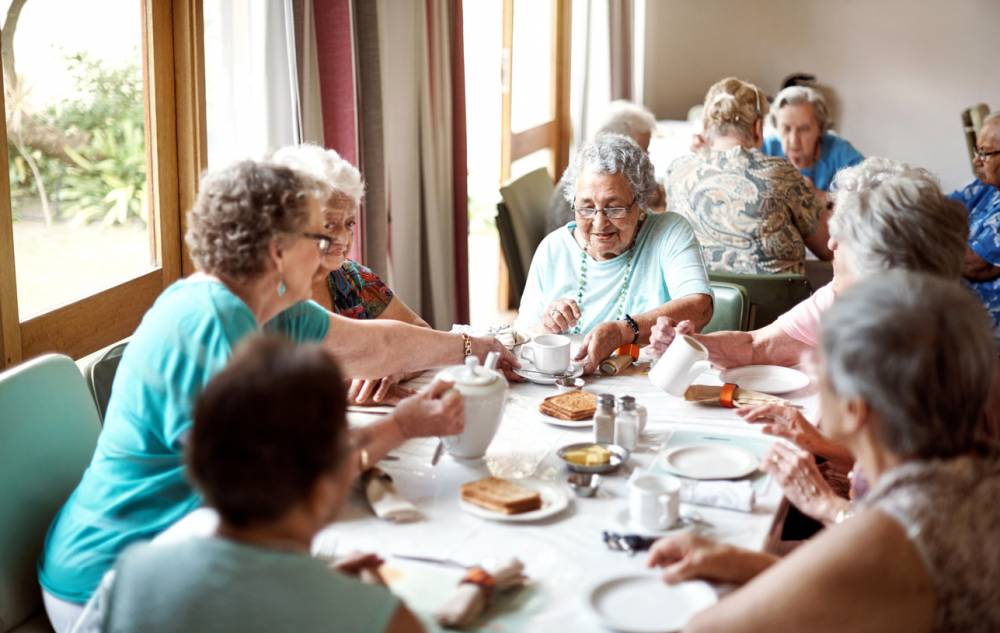
Moving to aged care is a huge step for any older person, it the next phase of their lives. The intention is that this new aged care facility is their “home” – and most probably the last home they’ll live in.
This is why it is important for them to be comfortable and at home – and an essential part of that is the food.
Aged care residents are dealing with frailty and a number of health conditions, so making sure they get all the hydration, vitamins and minerals, protein and overall nutrients is crucial to ensure their health does not further deteriorate.
Food at aged care can be rather lacking – as seen with numerous complaints about the quality.
In fact, one research from Bond University found that “on average, half of all residents in aged care are malnourished as a result of factors affecting appetite, dietary intake and nutrient absorption”.
“Malnutrition is associated with a multitude of adverse outcomes, including increased risk of infections, falls, pressure ulcers and hospital admissions, all of which can lead to increased health care costs and poorer quality of life.”
In my experience, aged care has a low daily allowance for their food budget, a high percentage of frozen food, staff who are not engaged and environments that are not encouraging.
Food and mealtimes have an enormous presence in a person’s life. Not only is it how a person gets their nutrition, but it plays a part in their social interactions and well-being.
In a 2017 research, it was found that facilities were spending on average $6.08, per resident per day, on raw food and ingredients alone.
When you think about the fact that most people spend $4 for a single coffee, $6.08 is not a lot for a day’s worth of food.
In aged care, food and beverages are not just a product – they are an experience. Aged care facilities have the same needs as many hospitality precincts.
We should strive to make food a positive experience – not just for the residents, but for the staff too.
Aged care needs to create a space where people want to be. Instead of hiding the kitchen and the kitchen staff away, bring them out to the open.
Think about the restaurants where you can see your food being made for you – there is no reason why that same philosophy can’t be applied to aged care.
Bring the kitchen table back – remember, the kitchen is the heart of the home.
For aged care owners and managers, there needs to be accountability and ownership of what they do. They need to get involved and know all the details, like the food cost, menus, nutritional value and the wastage.
Not everything can be outsourced, as an aged care manager, they also act as a “venue manager” where food is over 60 per cent of the experience.
Hiring the right people is also essential – aged care facilities don’t need gourmet chefs, they need people with the right attitude. They need people who are passionate about serving good food.
For staff and the residents, it should be encouraged that people connect through food. Bring the “family” element back to meal times in aged care. Barriers should be removed, it should be encouraged that people – residents, staff and families – eat together more.
Create a food philosophy that the aged care facility can live by – and be practical about it. It doesn’t have to be large, something as simple as committing to cage-free eggs or free-range chickens can change the attitude of how staff and residents approach food.
Food is not just what is served out in the dining hall – there are other ways to talk about food and encourage interest, such as gardens.
They don’t have to be anything extravagant, having a small rooftop or corner pots with herbs can have a big impact. This can even be turned into a hobby or activity for the residents.
The food – it doesn’t all need to be frozen or pre-prepackaged. Bring a fresh element into it. This could be something as simple as baking scones or making fresh pasta once a week.
We have to be practical here, we’ll never entirely get rid of frozen foods in aged care. But if we mix it up between house prep, premade, fresh and frozen, then the variety will change the whole energy and attitude that people will have when it comes to meal times.
Food isn’t just about what we eat and taste – it’s also a visual experience. Don’t forget we eat with our eyes, so the food needs to look appetising too.
Aged care facilities need to care about how food looks. If you don’t think a meal looks appetising, then there’s a good chance that the aged care resident doesn’t think it looks good either.
Get people excited about food, create activities and programs that liven up the “food experience” in aged care. This could be something as simple as having music at meal times or live cooking sessions.
You can even get families involved by introducing cooking classes with loved ones, or having quiz nights.
The industry needs to broaden their approach of making food. What aged care is currently doing right now is not good enough, and with expectations continuing to grow for future generations entering aged care – a big changes needs to happen today.
What do you have to say? Comment, share and like below.